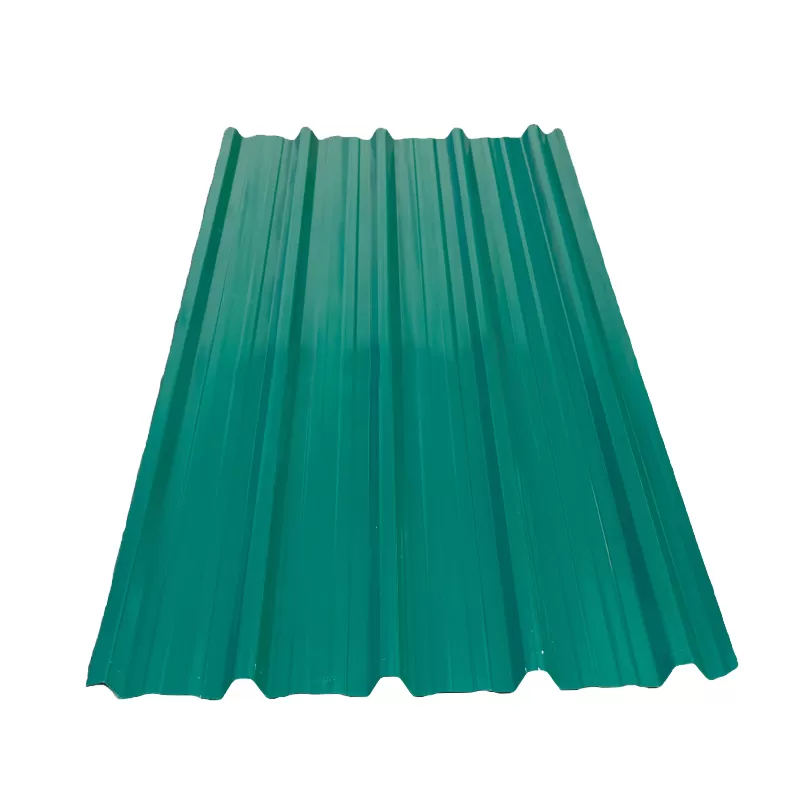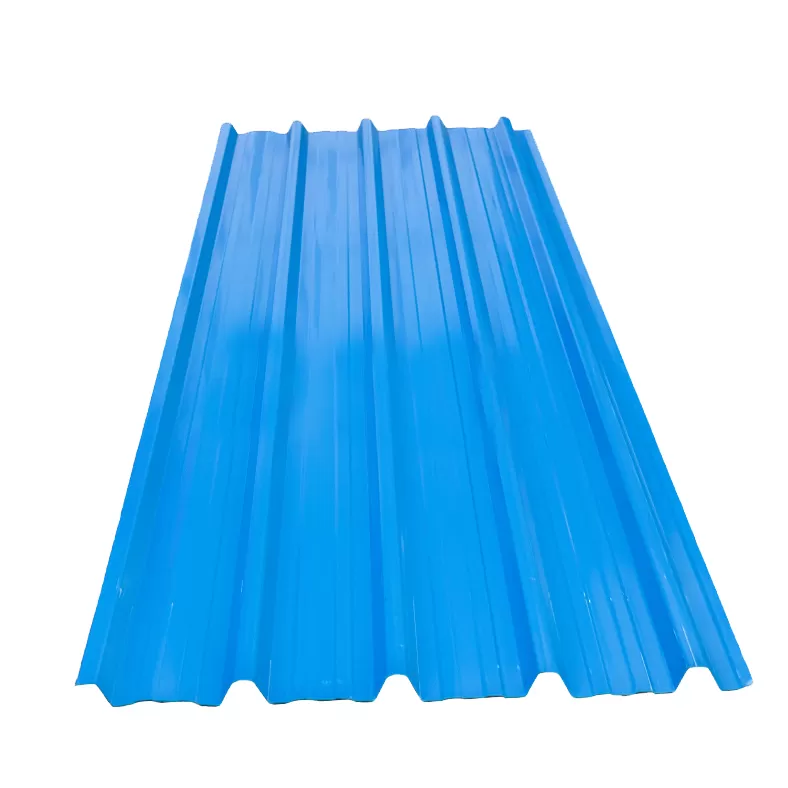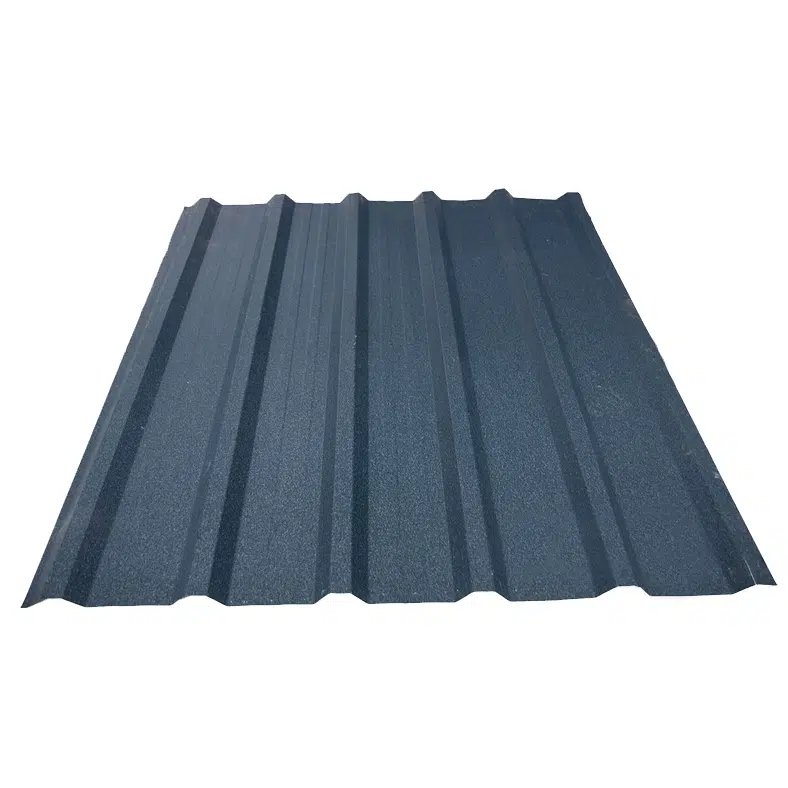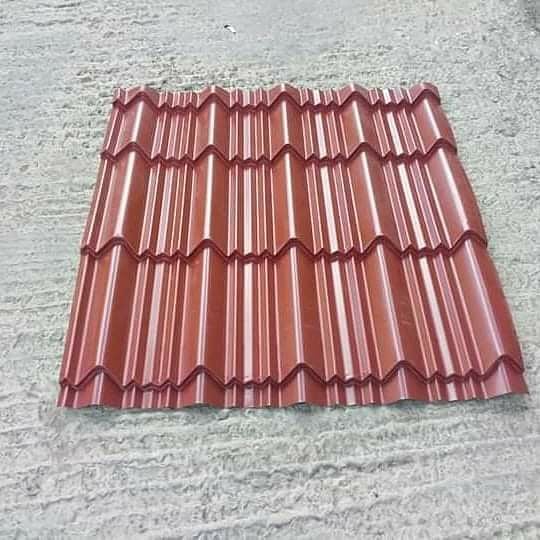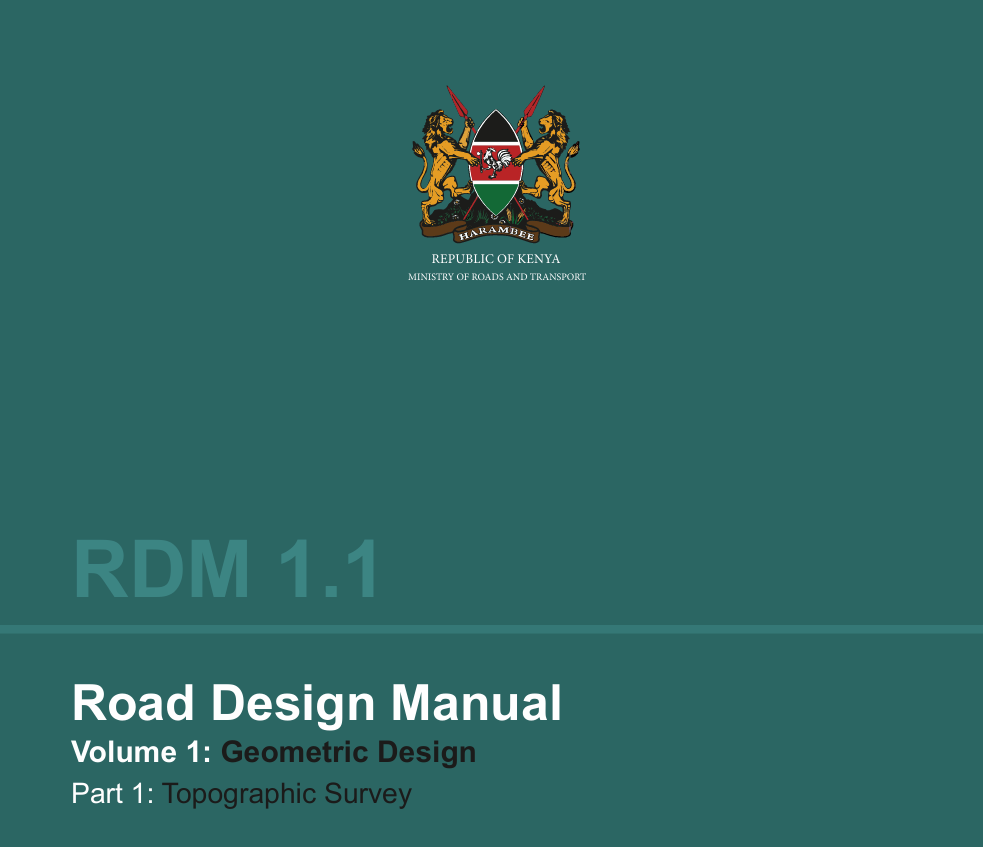BS 5328-Part 1: A Comprehensive Guide to Specifying Concrete
BS 5328-Part 1: A Comprehensive Guide to Specifying Concrete
BS 5328-Part 1 provided comprehensive guidance for concrete specification, covering designation, prescription, and design methods. The standard addressed material selection, fresh and hardened properties, and quality control procedures. Though replaced by BS 8500 and BS EN 206, its principles remain relevant for Kenyan construction professionals working on projects involving British Standards.
BS 5328-Part 1 serves as the cornerstone document for specifying concrete in construction projects, providing comprehensive guidance on material selection and mix specifications. If you're a civil engineering student, construction professional, or contractor working in Kenya's dynamic construction industry, understanding this British Standard can significantly impact your project's structural integrity and long-term performance.
The specification of concrete isn't just about mixing cement with water and aggregates. It's a precise science that demands careful consideration of multiple factors: environmental conditions, structural requirements, durability expectations, and economic constraints. Getting it wrong can lead to structural failures, costly repairs, or even catastrophic building collapses.
What is BS 5328-Part 1?
BS 5328-Part 1 titled "Guide to Specifying Concrete" was a British Standard that provided guidance on selecting concrete quality suitable for various construction purposes. Published by the British Standards Institution (BSI), this standard represented decades of research, practical experience, and industry consensus on best practices for concrete specification.
The standard emerged from a critical need within the construction industry. Before its development, concrete specification varied wildly across projects, leading to inconsistent quality and performance. BS 5328-Part 1 brought standardization, creating a common language between designers, specifiers, contractors, and concrete producers.
BS 5328 consisted of four distinct parts: Part 1 covered the guide to specifying concrete, Part 2 addressed methods for specifying concrete mixes, Part 3 dealt with production and transportation procedures, and Part 4 outlined sampling, testing, and compliance assessment procedures. Each part complemented the others, creating a comprehensive framework for concrete quality management.
How Does BS 5328-Part 1 Relate to Kenyan Construction?
Kenya's construction industry has historically relied on British Standards due to colonial heritage and continued educational ties with the United Kingdom. The Kenya Bureau of Standards (KEBS) has adopted many British Standards, making BS 5328-Part 1's principles relevant for Kenyan practitioners.
The National Construction Authority (NCA) regulates Kenya's construction sector, ensuring compliance with approved standards and codes. While Kenya has transitioned to newer standards, many practicing engineers and contractors still reference BS 5328 principles in their work, particularly on projects involving international consultants or donors who specify British Standards.
Understanding Concrete Specification Methods
What are the different ways to specify concrete? This question lies at the heart of BS 5328-Part 1. The standard recognized three primary specification approaches, each suited to different project circumstances and risk allocations.
Designated Concrete Mixes
Designated mixes represent the simplest specification method. The specifier merely states the intended use (such as "foundation concrete" or "paving concrete"), and the concrete producer selects an appropriate mix design to meet that application's requirements. This approach transfers most technical responsibility to the producer.
Designated mixes work well for straightforward applications where standard mixes have proven performance histories. They're commonly used in residential construction, minor civil works, and projects where specialized concrete properties aren't critical. The producer guarantees the concrete will perform adequately for the stated purpose.
In Kenya, many ready-mix concrete suppliers offer designated mixes targeted at common applications. A contractor building a residential foundation in Nairobi might simply order "foundation concrete grade 20," trusting the supplier's expertise in formulating appropriate mix proportions.
Prescribed Concrete Mixes
Prescribed mixes involve the specifier dictating exact mix proportions: cement content, aggregate types and quantities, water-cement ratio, and any admixtures. The producer must follow these instructions precisely, with the specifier bearing responsibility for the mix's performance.
This method suits situations where the specifier has specific requirements not met by standard mixes. Perhaps they're creating exposed aggregate finishes requiring particular aggregate aesthetics. Or they're working on a project with unusual exposure conditions demanding customized mix proportions.
The prescribed approach demands considerable expertise from the specifier. They must understand concrete technology thoroughly, as errors in prescription can lead to poor performance. It's less common in modern practice because it places significant risk on the designer.
Designed Concrete Mixes
Designed mixes represent a performance-based approach. The specifier states required properties (compressive strength, workability, durability class, maximum aggregate size), and the producer designs a mix to achieve these targets. The producer carries responsibility for the mix performing as specified.
This method has become increasingly popular because it balances flexibility with accountability. The specifier focuses on performance requirements rather than prescriptive details, allowing producers to optimize mixes using their materials and expertise. It encourages innovation and often delivers better value.
For complex projects in Kenya—such as high-rise buildings or major infrastructure works—designed mixes are typically specified. A contractor building a multi-story commercial tower in Nairobi would specify concrete grades (C25, C30, C35) with defined strength, workability, and durability requirements, leaving mix optimization to the concrete supplier.
What Properties Must You Specify?
Specifying concrete requires identifying both fresh and hardened properties. Fresh concrete properties govern placement and finishing, while hardened properties determine long-term structural performance and durability.
Critical Fresh Concrete Properties
Workability tops the list of fresh concrete properties. It describes how easily concrete flows, compacts, and finishes. Workability depends on project requirements: a heavily reinforced column demands higher workability than a mass concrete foundation. BS 5328-Part 1 guided specifiers in selecting appropriate workability classes.
The slump test remains the most common workability measurement in Kenya. Specifiers indicate target slump ranges (typically 75mm to 125mm for normal structural concrete), ensuring concrete can be properly placed and compacted on site.
Setting time matters for project logistics. Concrete must remain workable long enough for transportation, placement, and finishing, but shouldn't take excessively long to harden. Hot Kenyan climates can accelerate setting, requiring consideration of admixtures or special precautions.
Essential Hardened Concrete Properties
Compressive strength stands as the primary hardened property. It's typically specified at 28 days, with minimum characteristic strengths stated (20 N/mm², 25 N/mm², 30 N/mm², etc.). This strength determines the concrete's structural capacity and influences most other hardened properties.
Durability encompasses concrete's resistance to environmental deterioration. In Kenya, this includes resistance to sulfate attack (in certain coastal or soil conditions), chloride penetration (particularly near the ocean), carbonation, and aggressive chemical exposure. BS 5328-Part 1 helped specifiers match concrete composition to exposure conditions.
Different Kenyan regions present varying exposure conditions. Coastal areas around Mombasa face chloride-laden marine environments. Nairobi's urban areas deal with carbonation from atmospheric carbon dioxide. Industrial zones may experience chemical exposures. Each requires tailored concrete specifications.
Material Selection Under BS 5328-Part 1
What materials comprise concrete, and how should they be selected? BS 5328-Part 1 provided detailed guidance on choosing appropriate constituents to achieve desired concrete properties.
Cement Selection
Portland cement forms concrete's binding matrix. BS 5328-Part 1 offered guidance on selecting materials for concrete and choosing mixes to produce concrete with required properties in both fresh and hardened states. In Kenya, various cement types are available, each with distinct characteristics.
Ordinary Portland Cement (OPC) suits most general construction applications. Sulfate-resisting cement protects against sulfate attack in certain soils. Rapid-hardening cement accelerates strength gain for fast-track projects. Low-heat cement reduces thermal stresses in mass concrete pours.
Aggregate Requirements
Aggregates constitute approximately 70-80% of concrete volume, making their selection crucial. They're classified as fine aggregates (sand) and coarse aggregates (gravel or crushed stone). BS 5328-Part 1 emphasized aggregate quality, grading, and suitability.
Kenya has diverse aggregate sources. River sand and gravel dominate in many regions, though quarried crushed stone is increasingly used. Aggregate quality varies significantly, necessitating testing and quality control. Poor aggregates can severely compromise concrete performance regardless of cement quality.
The unit weight of materials affects mix design calculations and material ordering. Typical concrete has a unit weight around 2400 kg/m³, varying with aggregate density and void content.
Water Quality Standards
Water activates cement's binding properties and provides workability. While any potable water suits concrete production, some non-potable sources may be acceptable if they meet purity standards. BS 5328-Part 1 provided water quality criteria, focusing on harmful contaminants.
In Kenya, municipal water supplies generally meet concrete production standards. Rural or remote sites may use borehole or surface water, which should be tested before use. Contaminated water can affect setting time, strength development, and durability.
Admixtures and Additions
Admixtures are chemicals added in small quantities to modify concrete properties. Plasticizers improve workability without additional water. Superplasticizers dramatically increase flowability, enabling high-strength, low-water-content mixes. Retarders slow setting in hot weather. Accelerators speed hardening in cold conditions.
Additions like fly ash, ground granulated blast-furnace slag (GGBS), or silica fume partially replace cement, improving certain properties while potentially reducing costs and environmental impact. These materials require careful specification to ensure compatibility with project requirements.
Implementation in Kenyan Construction Projects
How do Kenyan construction projects implement concrete specifications? The process involves multiple stakeholders: designers, contractors, concrete suppliers, testing laboratories, and regulatory authorities.
On-Site Concrete Mixing
Many Kenyan construction sites, particularly smaller projects or remote locations, mix concrete on-site. On-site concrete mixing requires strict adherence to specified proportions, thorough quality control, and skilled supervision. BS 5328-Part 1 principles guide mix design even for site-batched concrete.
Site mixing offers flexibility and can be economical for smaller quantities. However, it demands rigorous batching control, consistent material quality, and proper mixing equipment. Poor site practices often lead to variable concrete quality.
Ready-Mix Concrete Suppliers
Ready-mix concrete has become increasingly popular in Kenya's urban centers. Professional suppliers operate batching plants with computerized controls, ensuring consistent quality and reducing on-site labor requirements. Major cities like Nairobi, Mombasa, and Kisumu have multiple ready-mix suppliers.
These suppliers typically offer concrete specified by grade (C15, C20, C25, C30, etc.), corresponding to characteristic strength. They can customize mixes for specific applications, incorporating admixtures or special cements as specified.
Role of Testing Laboratories
Certified materials testing laboratories verify concrete quality through standardized tests. These laboratories perform compressive strength tests on concrete cubes or cylinders, assess fresh concrete properties, and conduct durability tests when specified.
The National Construction Authority mandates testing for certain project categories, ensuring compliance with specifications. Reputable laboratories follow international testing standards, providing reliable quality assurance data.
Related Questions Throughout the Article
Why does concrete specification matter so much? Proper specification ensures concrete meets structural, durability, and functional requirements. Under-specified concrete may fail prematurely, while over-specification wastes resources and increases costs unnecessarily.
Can you use the same concrete mix for all applications? No. Foundations, columns, beams, slabs, pavements, and specialized applications each have unique requirements. Exposure conditions, loading patterns, and aesthetic considerations all influence appropriate concrete selection.
Who is responsible when concrete fails? Responsibility depends on the specification method. For designated mixes, the producer carries primary responsibility. For prescribed mixes, the specifier bears responsibility. For designed mixes, responsibility is shared based on specification accuracy and production compliance.
How has concrete specification evolved in Kenya? Kenya's construction industry has gradually adopted more sophisticated specification practices, moving from simple prescriptive approaches to performance-based specifications aligned with international standards.
The Transition from BS 5328 to BS 8500
When did BS 5328 become obsolete? BS 5328 was replaced in December 2003 by BS 8500, the Complementary British Standard to BS EN 206-1. This transition marked a significant shift in concrete specification philosophy, moving from purely British standards to harmonized European approaches.
The replacement wasn’t arbitrary. European integration demanded standardization across member states, ensuring concrete specified in one country could be understood and produced in another. BS 8500 provides substantial national provisions not covered in BS EN 206, with both documents replacing BS 5328 in December 2003.
What Changed with BS 8500?
BS 8500 introduced performance-based concepts more explicitly. Where BS 5328 focused heavily on prescriptive requirements, the newer standard emphasized achieving specified performance through flexible means. This shift encouraged innovation in concrete technology while maintaining quality assurance.
BS 8500 was revised and republished in 2015 to reflect updates to BS EN 206, with further amendments in 2016 and 2019, and the current version from 2023 reflecting new cement types and ternary blends. These revisions acknowledge evolving cement chemistry, environmental considerations, and advances in admixture technology.
The terminology changed significantly. In BS EN 206-1, slump is reported to the nearest 10mm rather than 5mm as in BS 5328, and slump is defined by classes S2, S3, S4, while consistence replaced workability from BS 5328. These seemingly minor changes required adjustment from practitioners accustomed to BS 5328 conventions.
Why Understanding BS 5328 Still Matters
Despite official withdrawal, BS 5328 principles remain relevant. Many Kenyan engineers trained under BS 5328 continue practicing. Legacy projects specified under BS 5328 require maintenance or extension. International projects may reference older British Standards.
Educational curricula often lag behind standard updates. University textbooks and reference materials may still cite BS 5328, particularly in institutions with limited resources for continuous curriculum updates. Understanding BS 5328 provides historical context for current practices.
How to Write Effective Concrete Specifications
What information must a concrete specification contain? Effective specifications balance completeness with clarity, providing all necessary information without overwhelming producers or contractors with excessive detail.
Essential Specification Components
Concrete grade forms the specification’s foundation. In Kenya, grades typically follow the “C” designation (C15, C20, C25, C30, C35, C40), where the number indicates characteristic compressive strength in N/mm² at 28 days. Higher grades suit structural elements experiencing greater loads.
Workability requirements must match placement conditions. Heavily reinforced sections, congested rebar arrangements, or pumped concrete demand higher workability than simple, lightly reinforced elements. Specify workability through slump ranges or consistency classes appropriate to construction methods.
Durability specifications address exposure conditions. Concrete in foundations faces soil chemicals. External walls endure weathering. Parking structures encounter de-icing salts. Marine structures battle chlorides. Each requires specific cement types, minimum cement content, maximum water-cement ratios, or protective admixtures.
Maximum aggregate size affects concrete properties and placement. Larger aggregates (up to 40mm) suit mass concrete with wide spacing between reinforcement bars. Smaller aggregates (10mm or 20mm) work better in densely reinforced sections or where smooth finishes matter.
Documentation Requirements
Specifications should be written, clear, and unambiguous. Oral instructions lead to misunderstandings and disputes. Written specifications provide reference points when questions arise during construction.
Include relevant standard references. Rather than rewriting standard requirements, reference them: “Concrete shall comply with BS 8500-2 for designated mix RC 30/37.” This approach maintains brevity while ensuring comprehensive coverage.
Specify testing frequencies and acceptance criteria. How many cube samples per pour? What constitutes acceptable strength results? When are additional tests required? Clear testing protocols prevent disputes over quality compliance.
Common Specification Mistakes
What errors frequently occur in concrete specifications? Understanding common pitfalls helps specifiers avoid them, improving project outcomes and reducing conflicts.
Over-Specification
Over-specifying concrete wastes money without improving performance. Specifying C35 concrete where C25 suffices increases costs by approximately 15-20% with no structural benefit. The best cement produces useless concrete when sites use unregulated dirty river sand, flaky aggregates, and sewage water to cast concrete in unknown proportions.
Some specifiers demand extremely low slump values unnecessarily, making concrete difficult to place and compact properly. Others specify exotic admixtures for standard applications where conventional concrete performs adequately. Right-sizing specifications balances performance with economy.
Under-Specification
Under-specification creates worse problems than over-specification. Failing to specify adequate durability provisions for aggressive environments leads to premature deterioration. Omitting minimum cement content or maximum water-cement ratios allows poor-quality concrete.
Many specifications neglect to address curing requirements explicitly. Proper curing dramatically affects concrete’s ultimate strength and durability, yet specifications often treat it as an afterthought. Specify curing methods, durations, and quality control measures.
Contradictory Requirements
Conflicting specifications confuse producers and contractors. Specifying both a prescribed mix (exact proportions) and performance requirements (strength class) creates ambiguity about which takes precedence. Demanding very low slump while requiring rapid placement through congested reinforcement sets impossible conditions.
Ensure specifications align with construction capabilities. Requiring specialized admixtures unavailable locally or specifying tolerances achievable only with sophisticated equipment creates implementation problems. Consider Kenya’s construction industry capabilities realistically.
Quality Control and Compliance Testing
How is concrete quality verified on Kenyan construction sites? Systematic testing ensures specified concrete properties are achieved, protecting both structural safety and contractual interests.
Sampling Procedures
Fresh concrete sampling follows standardized procedures. Samples must represent the concrete batch accurately, taken from multiple points within the load rather than from initial discharge. Contaminated sampling equipment or improper sample storage compromises results.
The National Construction Authority mandates testing for certain project categories, particularly high-rise buildings, bridges, and critical infrastructure. Compliance with NCA requirements is non-negotiable for regulated projects.
Compressive Strength Testing
Cube tests remain the primary strength verification method in Kenya, following British testing traditions. Standard cubes measure 150mm × 150mm × 150mm, though 100mm cubes may be used when maximum aggregate size permits. Specimens cure under controlled conditions before testing at specified ages.
Testing typically occurs at 7 days and 28 days. The 7-day test provides early indication of concrete quality, while the 28-day result determines compliance with specified characteristic strength. Results below specified values trigger investigations and potential remedial actions.
Characteristic strength differs from average strength. To achieve 25 N/mm² characteristic strength, average strength must exceed this value, with individual results also meeting minimum criteria. This statistical approach accounts for inevitable variability in concrete production.
Non-Destructive Testing
Non-destructive testing assesses in-place concrete without damaging the structure. Schmidt rebound hammers estimate surface hardness correlating with compressive strength. Ultrasonic pulse velocity tests detect internal voids or deterioration. These methods complement cube testing, providing additional quality assurance.
Core samples extracted from hardened structures provide definitive strength data when cube results are questionable or unavailable. Coring damages the structure locally but offers reliable information about actual in-place concrete quality.
Role of Certified Testing Laboratories
Why use accredited laboratories for concrete testing?
Certified materials testing laboratories provide reliable, legally defensible test results recognized by regulatory authorities and courts.
Accredited laboratories maintain calibrated equipment, employ trained technicians, follow standardized procedures, and participate in proficiency testing programs. These quality systems ensure result reliability and consistency.
Kenya has several KEBS-accredited laboratories in major cities. Nairobi hosts multiple facilities serving the capital’s construction boom. Mombasa, Kisumu, Nakuru, and other regional centers have testing facilities supporting local construction industries.
Laboratory selection matters. Choose laboratories with relevant accreditation scopes, appropriate equipment, convenient locations, and reasonable turnaround times. Establish relationships with reliable laboratories before projects begin, avoiding delays when urgent testing needs arise.
Practical Implementation Strategies
How do successful projects implement concrete specifications? Effective implementation requires coordination among designers, contractors, suppliers, and quality control personnel.
Pre-Construction Planning
Pre-construction meetings align all parties on specification requirements. Discuss concrete grades, placement sequences, testing protocols, and acceptance criteria. Address potential challenges: difficult access, congested reinforcement, weather considerations, or material availability.
Trial mixes verify that proposed concrete compositions meet specifications before large-scale production. Suppliers produce trial batches, testing fresh and hardened properties to confirm compliance. Trial mixes identify problems early, allowing adjustments before critical placement.
Site Implementation
Delivery documentation accompanies each concrete load. This paperwork confirms the concrete grade, batch time, expected workability, and any special instructions. Reject loads lacking proper documentation or showing signs of initial setting.
On-site testing occurs before concrete placement. Perform slump tests to verify workability. Take cube samples according to specified frequencies. Record all tests with timestamps, locations, and weather conditions. Incomplete documentation complicates later quality assessment.
Communication Protocols
Clear communication prevents errors and misunderstandings. Establish reporting chains for test results, non-conformance issues, and change requests. Document all site instructions and approvals in writing.
Mobile technology facilitates real-time communication and documentation. Photograph concrete deliveries, placement activities, and test procedures. Digital records provide valuable evidence if disputes arise later.
Case Studies: Concrete Specification in Kenyan Projects
How do real Kenyan projects implement concrete specifications? Examining actual applications illustrates theoretical principles in practice.
High-Rise Construction in Nairobi
Nairobi’s high-rise buildings demand high-performance concrete for columns and cores. Projects typically specify C30 to C40 concrete for vertical elements, with C25 or C30 for floor slabs.
These projects use ready-mix concrete exclusively, leveraging suppliers’ quality control systems and consistent batching. Concrete pumping reaches upper floors, requiring carefully specified workability and cohesion properties. Admixtures control setting time, maintaining workability during pumping and placement.
Testing occurs frequently—often multiple cube sets per floor level. Licensed engineers supervise concrete placement, ensuring specification compliance and proper construction practices.
Infrastructure Projects
Road and bridge construction requires durable concrete resisting traffic loads and environmental exposure. Concrete grade contractors provide specified grades for different structural elements.
Pavement concrete typically uses C25 or C30 grades with air entrainment for freeze-thaw resistance where applicable. Bridge decks demand higher grades (C35 or C40) with specific cover requirements protecting reinforcement from chloride ingress.
These projects often specify prescribed mixes for critical elements, giving designers direct control over concrete composition. Site batching may be used in remote locations lacking ready-mix access, requiring rigorous batching control and quality assurance.
Residential Construction
Residential projects represent Kenya’s largest construction sector. Foundation types vary with soil conditions, but most use C20 or C25 concrete for strip footings, pad foundations, or raft slabs.
Many residential projects use on-site concrete mixing, particularly in areas lacking ready-mix suppliers. Success depends on proper material selection, accurate batching, thorough mixing, and adequate curing.
Calculating material quantities accurately prevents shortages during placement. Under-ordering concrete forces construction joints in inappropriate locations. Over-ordering wastes money and creates disposal challenges.
Regional Considerations in Kenya
Do concrete specifications vary across Kenyan regions? Regional factors influence appropriate specifications, requiring location-specific adjustments.
Coastal Areas
Mombasa and coastal regions face chloride exposure from marine environments. Concrete specifications must address this aggressive condition through increased cover to reinforcement, reduced permeability (lower water-cement ratios, higher cement contents), and possibly sulfate-resisting cement where soil sulfates coexist with chlorides.
Local building materials availability varies regionally. Coastal areas have different aggregate sources than interior regions, potentially affecting concrete properties and requiring mix design adjustments.
Highland Regions
Nairobi and highland areas experience cooler temperatures affecting concrete setting and strength development. Cold weather concreting may require heated water, accelerating admixtures, or extended curing periods.
Higher elevations often have better-quality aggregate sources, particularly crushed stone from highland quarries. These materials produce excellent concrete when properly specified and controlled.
Arid and Semi-Arid Regions
Northern and eastern Kenya’s arid regions present curing challenges. Rapid moisture loss in hot, dry conditions severely impacts strength development and surface quality. Specifications must mandate rigorous curing: continuous water application, curing compounds, or plastic sheeting moisture retention.
Water availability affects concrete production in these regions. Specifications should acknowledge local conditions, possibly requiring water storage provisions or alternative curing methods suited to scarce water resources.
Future Trends in Concrete Specification
How is concrete specification evolving? Emerging trends reflect environmental concerns, technological advances, and changing construction practices.
Sustainability Focus
Sustainable concrete specifications increasingly emphasize reduced carbon footprints. This involves specifying cement replacements (fly ash, GGBS, silica fume), recycled aggregates, or novel binders with lower embodied carbon.
Kenya’s growing environmental awareness drives interest in greener concrete. However, availability of supplementary cementitious materials remains limited compared to developed markets. Specifications must balance environmental goals with practical material availability.
Performance-Based Approaches
Specifications continue shifting from prescriptive to performance-based approaches. Rather than dictating exact mix compositions, specifiers increasingly state required performance (strength, durability, volume stability), allowing producers to optimize using available materials and technology.
This trend benefits both specifiers and producers. Specifiers focus on outcomes rather than means, while producers leverage expertise to deliver performance economically. However, it requires sophisticated quality control systems and mutual trust between parties.
Digital Documentation
Digital tools transform specification and documentation practices. Building Information Modeling (BIM) integrates concrete specifications with structural designs. Mobile apps facilitate on-site testing and documentation. Cloud-based systems provide real-time access to test results and quality records.
These technologies improve accuracy, transparency, and accountability. They’re gradually penetrating Kenya’s construction industry, particularly on large projects with international involvement or sophisticated local contractors.
Best Practices for Construction Professionals
What practices ensure successful concrete specification and implementation? Experienced professionals follow proven approaches minimizing problems and optimizing outcomes.
For Designers and Specifiers
Understand your materials. Specify concrete based on actual material properties and availability in your region. Don’t blindly copy specifications from foreign projects or textbooks without considering local context.
Visit ready-mix plants and material suppliers. Understanding their capabilities, quality control procedures, and limitations helps write realistic, achievable specifications. Building relationships with suppliers facilitates problem-solving when issues arise.
Consider constructability. Specifications must be implementable with available equipment, skills, and site conditions. Consult contractors during design to identify potential construction challenges your specifications might create.
For Contractors and Site Engineers
Review specifications thoroughly before bidding or starting work. Clarify ambiguities early rather than making assumptions leading to disputes. Document your interpretation and seek written confirmation.
Plan for quality control. Budget adequate time and resources for testing, sampling, and documentation. Cutting corners on quality control exposes you to liability and jeopardizes structural integrity.
Maintain detailed records. Photograph concrete deliveries, placement activities, curing operations, and test procedures. Comprehensive documentation protects you if quality questions arise later and demonstrates professionalism to clients.
For Students and Young Professionals
Study both old and new standards. Understanding BS 5328 alongside BS 8500 and BS EN 206 provides valuable historical context and helps you work with practitioners trained under different systems.
Seek mentorship from experienced engineers. Concrete specification involves judgment developed through experience. Learn from others’ successes and mistakes rather than making all mistakes yourself.
Stay current with evolving standards, materials, and technologies. The construction industry continuously evolves. Continuous learning separates competent professionals from those left behind by change.
Order Construction Materials From Us Today
Box Profile (Glossy, Gauge 28)
KSh 650.00
Our Box Profile iron sheets are crafted for superior durability and exceptional weather resistance, making them the ideal choice for long-lasting roofing solutions across Kenya. To make your project even more convenient, we offer free delivery across Kenya when one orders 40 pieces and above. Trust us for reliable products and dependable service for all your building needs.
Box Profile (Glossy)
KSh 470.00
Our Box Profile iron sheets are crafted for superior durability and exceptional weather resistance, making them the ideal choice for long-lasting roofing solutions across Kenya. To make your project even more convenient, we offer free delivery across Kenya when one orders 40 pieces and above. Trust us for reliable products and dependable service for all your building needs.
Box Profile (Matte, Gauge 28)
KSh 680.00
Our Box Profile iron sheets are crafted for superior durability and exceptional weather resistance, making them the ideal choice for long-lasting roofing solutions across Kenya. To make your project even more convenient, we offer free delivery across Kenya when one orders 40 pieces and above. Trust us for reliable products and dependable service for all your building needs.
Box Profile (Matte)
KSh 530.00
Our Box Profile iron sheets are crafted for superior durability and exceptional weather resistance, making them the ideal choice for long-lasting roofing solutions across Kenya. To make your project even more convenient, we offer free delivery across Kenya when one orders 40 pieces and above. Trust us for reliable products and dependable service for all your building needs.
Corrugated Iron Sheet (Gauge 30)
KSh 470.00
Our corrugated iron sheets are crafted for superior durability and exceptional weather resistance, making them the ideal choice for long-lasting roofing solutions across Kenya. To make your project even more convenient, we offer free delivery across Kenya when one orders 40 pieces and above. Each high-quality sheet provides excellent value for money, ensuring your structure is protected for years to come. Trust us for reliable products and dependable service for all your building needs.
Elegantile (Glossy, Gauge 28)
KSh 670.00
Our Elegant Tile profile are crafted for superior durability and exceptional weather resistance, making them the ideal choice for long-lasting roofing solutions across Kenya. To make your project even more convenient, we offer free delivery across Kenya when one orders 40 pieces and above. Trust us for reliable products and dependable service for all your building needs.
Elegantile (Glossy, Gauge 30)
KSh 550.00
Our Elegant Tile profile are crafted for superior durability and exceptional weather resistance, making them the ideal choice for long-lasting roofing solutions across Kenya. To make your project even more convenient, we offer free delivery across Kenya when one orders 40 pieces and above. Trust us for reliable products and dependable service for all your building needs.
Elegantile (Matte, Gauge 28)
KSh 680.00
Our Elegant Tile profile with matte texture are crafted for superior durability and exceptional weather resistance, making them the ideal choice for long-lasting roofing solutions across Kenya. To make your project even more convenient, we offer free delivery across Kenya when one orders 40 pieces and above. Trust us for reliable products and dependable service for all your building needs.
Elegantile (Matte, Gauge 30)
KSh 580.00
Our Elegant Tile profile with matte texture are crafted for superior durability and exceptional weather resistance, making them the ideal choice for long-lasting roofing solutions across Kenya. To make your project even more convenient, we offer free delivery across Kenya when one orders 40 pieces and above. Trust us for reliable products and dependable service for all your building needs.
Versatile (Glossy, Gauge 28)
KSh 670.00
Our versatile iron sheets are crafted for superior durability and exceptional weather resistance, making them the ideal choice for long-lasting roofing solutions across Kenya. To make your project even more convenient, we offer free delivery across Kenya when one orders 40 pieces and above. Trust us for reliable products and dependable service for all your building needs.
Versatile (Glossy, Gauge 30)
KSh 550.00
Our versatile iron sheets are crafted for superior durability and exceptional weather resistance, making them the ideal choice for long-lasting roofing solutions across Kenya. To make your project even more convenient, we offer free delivery across Kenya when one orders 40 pieces and above. Trust us for reliable products and dependable service for all your building needs.
Versatile (Matte, Gauge 28)
KSh 680.00
Our versatile iron sheets are crafted for superior durability and exceptional weather resistance, making them the ideal choice for long-lasting roofing solutions across Kenya. To make your project even more convenient, we offer free delivery across Kenya when one orders 40 pieces and above. Trust us for reliable products and dependable service for all your building needs.
Frequently Asked Questions
What is the difference between BS 5328 and BS 8500?
BS 5328 was the original British Standard for concrete specification, consisting of four parts covering specification guidance, mix design methods, production procedures, and testing protocols. BS 8500 replaced it in December 2003, working alongside BS EN 206 (the European standard). BS 8500 takes a more performance-based approach, reflecting harmonization with European practices while maintaining UK-specific provisions. The newer standard better accommodates modern cement types, supplementary materials, and sustainability considerations.
Can I still use BS 5328 for projects in Kenya?
While BS 5328 was officially withdrawn in 2003, its principles remain relevant and many practitioners still reference it. However, modern projects should specify concrete according to current standards like BS 8500 or equivalent Kenyan standards adopted by KEBS. If working with international consultants or donors, clarify which standards apply to your specific project. Some legacy projects or maintenance work on older structures may legitimately reference BS 5328.
How do I choose between designated, prescribed, and designed concrete mixes?
Your choice depends on project complexity, risk allocation preferences, and your technical expertise. Use designated mixes for straightforward applications where standard mixes have proven performance. Choose prescribed mixes only if you have specific requirements not met by standard approaches and possess expertise to design appropriate compositions. Designed mixes suit most modern construction, allowing you to specify performance requirements while leveraging producers' technical capabilities and material knowledge.
What concrete grade should I specify for residential foundations in Kenya?
Most residential foundations in Kenya use C20 or C25 concrete, depending on soil conditions and structural loads. C20 suffices for light single-story structures on competent soils. C25 provides greater safety margins and suits multi-story buildings or challenging soil conditions. Your geotechnical survey should inform foundation design and appropriate concrete specifications. Always consult a qualified structural engineer rather than guessing.
How often should concrete be tested on construction sites?
Testing frequency depends on project size, criticality, and regulatory requirements. The NCA mandates specific testing frequencies for regulated projects. As a general guideline, take at least one set of cube samples per 50m³ of concrete or per day's pour, whichever is more frequent. Critical elements like columns in high-rise buildings warrant more frequent testing. Small residential projects might test less frequently but should still maintain quality control through regular sampling.
What happens if concrete test results fail to meet specifications?
Failed test results trigger investigations into causes: sampling errors, testing mistakes, production problems, or specification issues. First, verify test validity through repeat testing or core sampling. If concrete genuinely fails, assess whether the deficiency compromises structural safety. Minor shortfalls might be acceptable with engineering evaluation. Significant failures may require strengthening, demolition, or structural modifications. Document everything thoroughly and involve structural engineers in decision-making.


